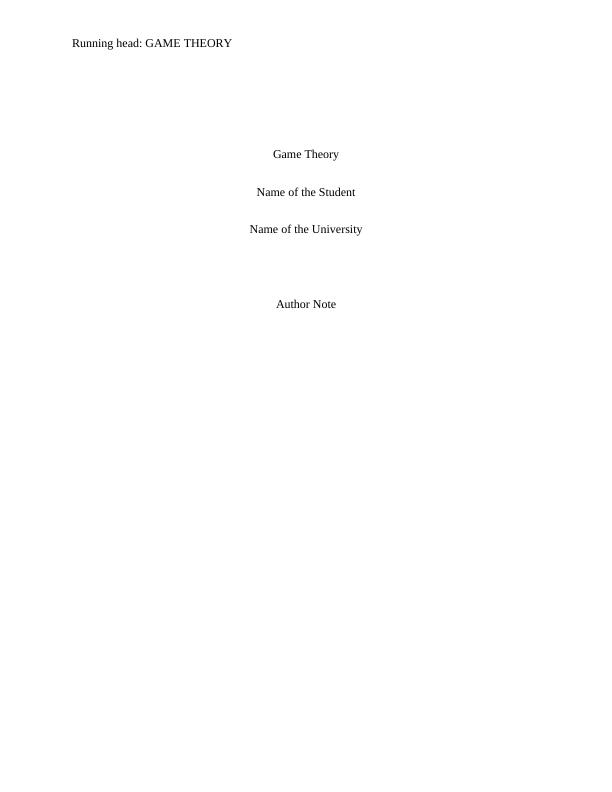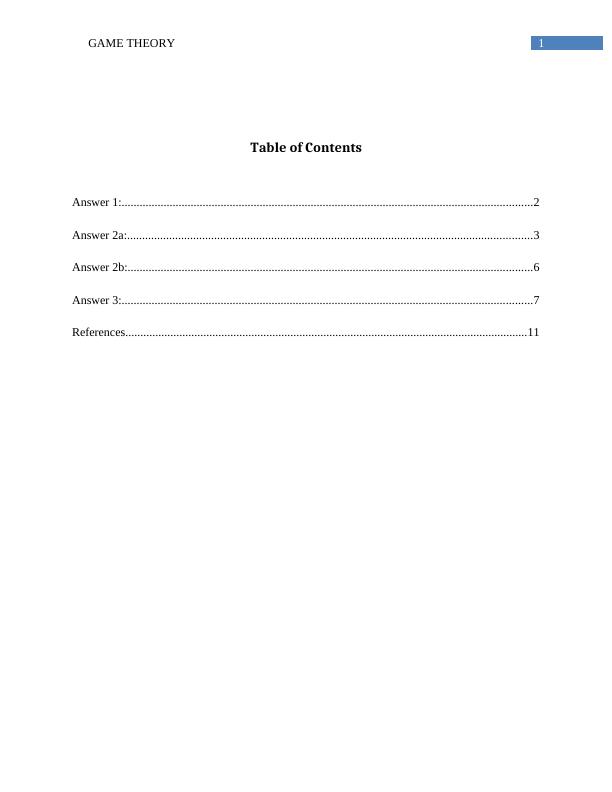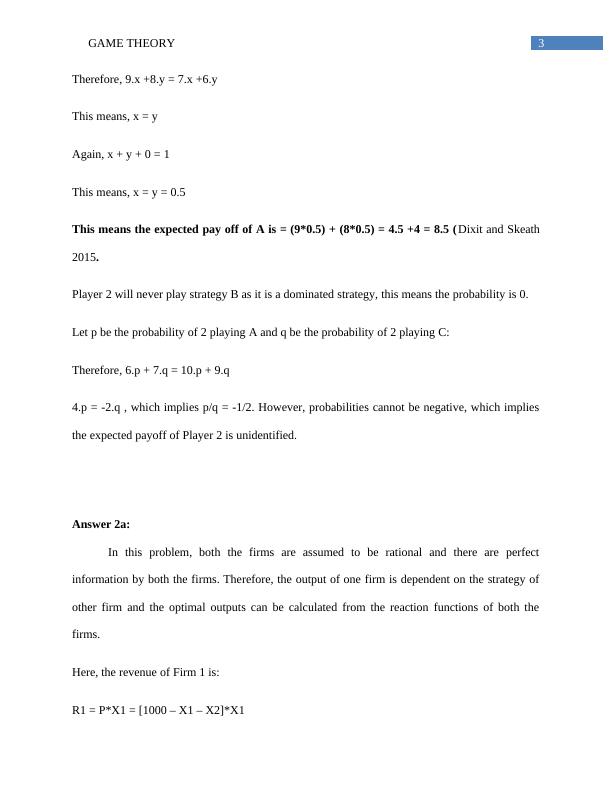Game Theory Assignment - Nash Equilibrium
13 Pages2229 Words135 Views
Added on 2020-02-24
Game Theory Assignment - Nash Equilibrium
Added on 2020-02-24
ShareRelated Documents
End of preview
Want to access all the pages? Upload your documents or become a member.
Game Theory: Algorithms and Applications
|5
|963
|390
Basics of Game Theory
|9
|1389
|59
Solved Math Problems for Students | Desklib
|6
|1292
|206
Applied Engineering Statistics | Questions-Answers
|33
|3277
|30
Probability and Statistics Annotated Bibilography 2022
|12
|1001
|24
Desklib - Online Library for Study Material and Solved Assignments
|14
|2279
|278




